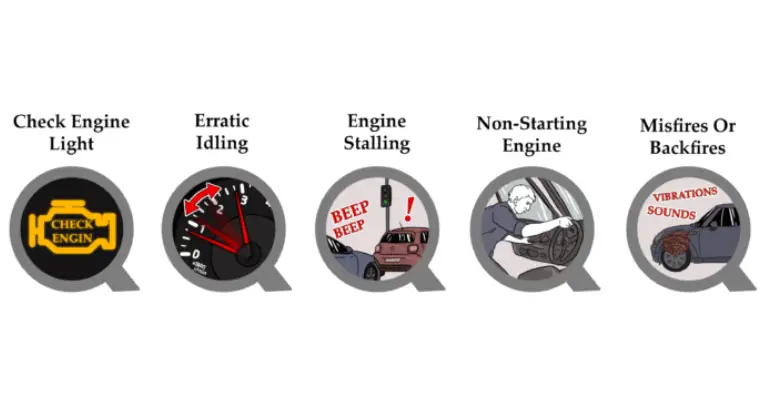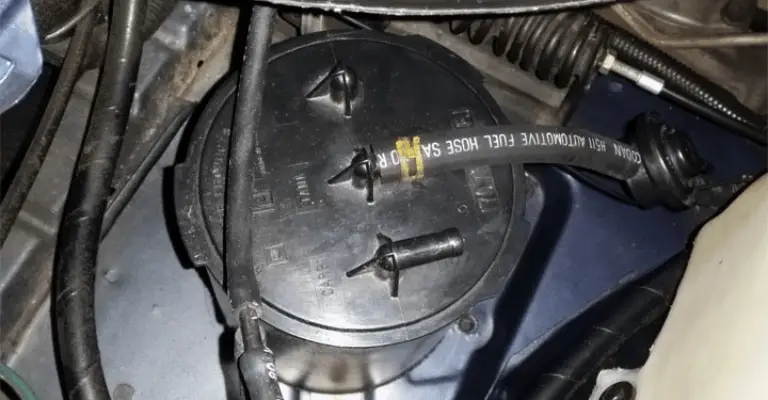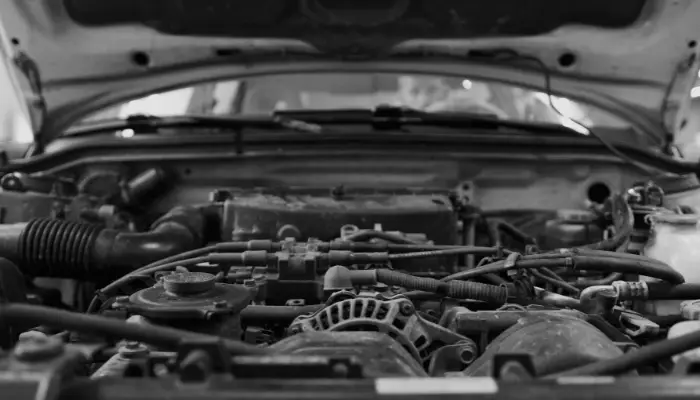Last Updated on August 24, 2023 by Chase Manhattan
From my time in the industry, I’ve rarely been fooled as badly as I have when trying to diagnose a bad purge valve. Unfortunately, this issue presents itself in many ways that all coincide with other potential issues – that all have to be tested for when you’re a technician, unfortunately educated guesses are frowned upon. So, that’s why I’m here. I’m here to help you identify the symptoms of a bad purge valve, understand why it’s happening, and then understand what happens if you continue driving with a bad purge valve. So keep reading and let’s get into it!
- How to Clean Car Carpets Quick and Easy - July 10, 2024
- Can You Touch Up Clear Coat? Yes and No (Here’s Why) - November 25, 2023
- How To Wax A Car By Hand: A Comprehensive Guide - November 14, 2023
To fully understand the diagnostics procedures behind identifying problems with your vehicles, it’s required to understand all the components involved in the system. With that being said:
A purge valve is a crucial component of your vehicle’s Evaporative Emission Control (EVAP) system. It helps in reducing harmful emissions by redirecting fuel vapors from the fuel tank to the engine. However, a failing purge valve can lead to various issues and affect your vehicle’s performance. In this article, we will discuss the symptoms of a bad purge valve, the effects of a stuck open or closed valve, how to diagnose the issue, and the ways to test and fix the problem which *hopefully* only involves cleaning the purge valve.

Quick Navigation
What Are The Symptoms Of A Bad Purge Valve?
Here are the primary symptoms of a bad purge valve:
- Rough Idle
- Misfiring or Reduced Performance
- Reduced Fuel Efficiency
- Difficulty Starting
- Smell of Raw Fuel Vapors
- Check Engine Light
Rough Idle
A faulty purge valve can cause your engine to experience rough idling, which means it will not run smoothly, especially when stopped at a stop sign or red light. This can be attributed to a loss of vacuum, which affects the idle speed.
Misfiring or Reduced Performance
When the purge valve is stuck open, your engine will receive more air than required, causing misfires and reduced performance. This results in a weaker performance from your engine, making it difficult to accelerate or maintain speed.
Reduced Fuel Efficiency
A bad purge valve can also lead to reduced fuel efficiency. When the valve fails to open correctly, fuel vapors that should be utilized for combustion will be sent to the EVAP canister and released into the atmosphere. This will cause your vehicle to consume more fuel than necessary.
Difficulty Starting
If your vehicle has a vacuum leak caused by a bad purge valve, it will be difficult to start. The leak causes outside air to enter the engine uncontrollably, compromising the combustion process and making it challenging to ignite the engine.
Smell of Raw Fuel Vapors
A malfunctioning purge valve might cause a strong smell of raw fuel vapors in and around your vehicle. This is due to the valve’s inability to redirect the fuel vapors, causing them to escape into the atmosphere or the vehicle’s cabin.
Check Engine Light
The check engine light can come on for various reasons, including a bad purge valve. If the valve is faulty or worn out, it can trigger the check engine light on your dashboard, indicating that there’s an issue with the EVAP system.
What Happens When A Purge Valve Gets Stuck Open?
A stuck open purge valve allows excessive air to enter the engine, causing a lean air-fuel mixture. This can result in poor engine performance, misfiring, and difficulty in starting the engine. Additionally, it can lead to increased emissions and a failed emissions test.
How To Identify When It’s Happening
To identify if your purge valve is stuck open, look for symptoms like rough idling, misfires, reduced engine performance, and difficulty starting. If you experience these issues, there’s a possibility that your purge valve is stuck open and needs to be checked.
What Happens When A Purge Valve is Stuck Closed?
When the purge valve is stuck closed, it fails to redirect the fuel vapors back into the engine, resulting in increased emissions and a failed emissions test. This can also cause the fuel tank to be pressurized, which might lead to fuel system issues and poor engine performance. In some cases, the evap canister can be bypassed to allow for more performance-oriented applications that consume more fuel.
How To Identify When It’s Happening
If you notice symptoms like a strong smell of raw fuel vapors, erratic fuel gauge readings, or if your vehicle consistently fails emissions tests, it’s likely that your purge valve is stuck closed.
What Causes A Purge Valve To Go Bad?
Purge valves can go bad due to various reasons, such as:
- Normal wear and tear over time
- Contaminants in the fuel system causing blockages
- Faulty wiring or electrical connections
- Damaged or malfunctioning components in the EVAP system
How Long Can You Drive With A Bad Purge Valve?
Driving with a bad purge valve is not recommended as it can cause a series of issues that will affect your vehicle’s performance and emissions. While it may not cause immediate damage, in the long run, it can lead to problems with the fuel system, engine performance, and increased emissions, which can harm the environment and potentially result in costly repairs.
How Can You Test A Purge Valve?
Testing a purge valve involves the following steps:
- Locate the purge valve in your vehicle. It is typically found in the engine compartment or near the fuel tank.
- Turn off the engine and let it cool.
- Disconnect the electrical connector and vacuum lines from the purge valve.
- Test the resistance between the valve’s terminals using a multimeter. The resistance should be within the specified range (usually between 15-75 ohms).
- Test the valve’s operation by applying voltage (usually 12 volts) and checking if it opens and closes correctly.
- Inspect the vacuum lines and electrical connections for any signs of damage or leaks.
If the purge valve fails any of these tests, it’s likely that it needs to be replaced.
Where Is The Purge Valve Located?
The purge valve is usually located in the engine compartment or near the fuel tank. It can be identified as a small plastic component with an electrical connector and vacuum lines connected to it.

Conclusion
A bad purge valve can cause several issues with your vehicle’s performance and emissions. If you suspect that your purge valve is faulty or stuck open/closed, it’s essential to diagnose and fix the problem as soon as possible to avoid long-term damage and costly repairs. Regular maintenance and inspection of the EVAP system can help prevent purge valve issues and ensure your vehicle runs efficiently and emits fewer harmful pollutants.

